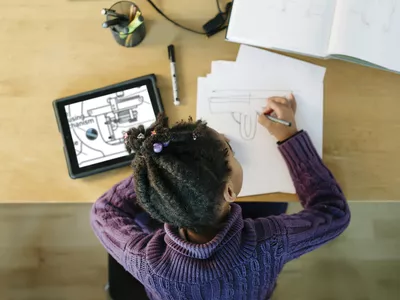
How to Diagnose and Fix Frequent Memory Failures on Your Windows System - Tips by YL Software

Mastering Display Customization on Windows [Student]: What Is the Value of (B ) if It Satisfies the Equation (\Frac{b}{6} = 9 )?
The Windows 10 display settings allow you to change the appearance of your desktop and customize it to your liking. There are many different display settings you can adjust, from adjusting the brightness of your screen to choosing the size of text and icons on your monitor. Here is a step-by-step guide on how to adjust your Windows 10 display settings.
1. Find the Start button located at the bottom left corner of your screen. Click on the Start button and then select Settings.
2. In the Settings window, click on System.
3. On the left side of the window, click on Display. This will open up the display settings options.
4. You can adjust the brightness of your screen by using the slider located at the top of the page. You can also change the scaling of your screen by selecting one of the preset sizes or manually adjusting the slider.
5. To adjust the size of text and icons on your monitor, scroll down to the Scale and layout section. Here you can choose between the recommended size and manually entering a custom size. Once you have chosen the size you would like, click the Apply button to save your changes.
6. You can also adjust the orientation of your display by clicking the dropdown menu located under Orientation. You have the options to choose between landscape, portrait, and rotated.
7. Next, scroll down to the Multiple displays section. Here you can choose to extend your display or duplicate it onto another monitor.
8. Finally, scroll down to the Advanced display settings section. Here you can find more advanced display settings such as resolution and color depth.
By making these adjustments to your Windows 10 display settings, you can customize your desktop to fit your personal preference. Additionally, these settings can help improve the clarity of your monitor for a better viewing experience.
Post navigation
What type of maintenance tasks should I be performing on my PC to keep it running efficiently?
What is the best way to clean my computer’s registry?
Also read:
- [New] 2024 Approved Essential Techniques for Audio Recording on Modern Windows
- [Updated] 2024 Approved Top Video Conference Solutions Security First for Businesses
- 1. The Ultimate List of Top Partition Recovery Software for Quick Fixes
- 如何有效地在Windows 11系统中保存和撤销数据
- A Step-by-Step Guide to Your First Twitter Profile for 2024
- Breaking Free From Obsolete Systems: Solve Your Windows 10 Version Upgrade Dilemma (Windows 10 21H2)
- Choosing the Optimal Internet Connection for Seamless Video Streaming - Expert Advice From YL Computing
- Dealing with Constant 100% CPU Use - Fixes Unveiled
- Guida Passo-Passo Alla Creazione Di Un Backup Immagina Sistema Sui Computer Dell Con Windows 10/11
- How to Fake Snapchat Location on Honor Magic 5 Lite | Dr.fone
- How to Recover Deleted Pages in Microsoft OneNote - Step-by-Step Guide
- In 2024, 2 Ways to Transfer Text Messages from Lava Blaze 2 Pro to iPhone 15/14/13/12/11/X/8/ | Dr.fone
- Overcoming Obstacles in Gaming: Strategies to Resolve Your Xbox One's Constant Green Screen Error
- Review of Michael Kors' Access Gen 5E MKGO: The Intersection of Sophistication and Technical Excellence
- Title: How to Diagnose and Fix Frequent Memory Failures on Your Windows System - Tips by YL Software
- Author: Larry
- Created at : 2025-03-01 16:40:46
- Updated at : 2025-03-07 16:27:47
- Link: https://win-bits.techidaily.com/how-to-diagnose-and-fix-frequent-memory-failures-on-your-windows-system-tips-by-yl-software/
- License: This work is licensed under CC BY-NC-SA 4.0.